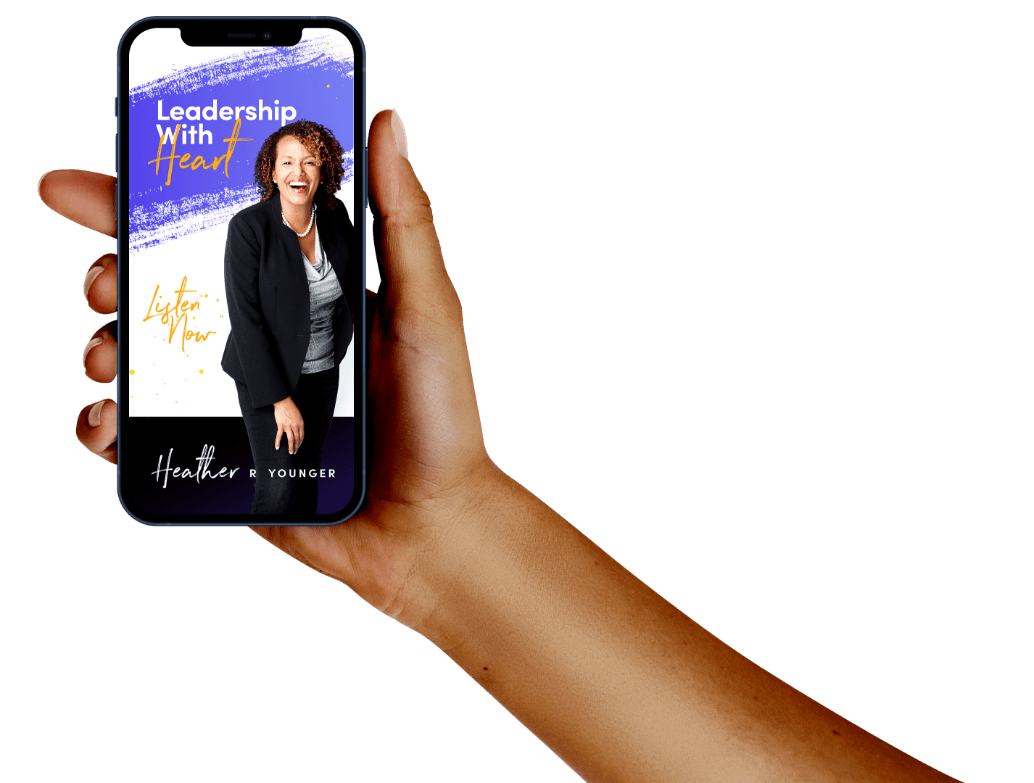{Guest post by Cynthia Grant, PhD, MBA, LCSW, Chief Clinical Officer, AllHealth Network}-Leadership with Heart podcast episode #85
Introduction to my employee well-being WHY.
Here’s my truth. I really, genuinely, whole heartedly care about my employees. I am a psychotherapist by training now working as a leader at a behavioral health organization, but that’s not why I care. In my mind, being a leader is about carrying responsibility not only for the organization, but for the people who make up the heart and soul of the business. And right now, many of my people are scared and need me to lead them through uncertain times filled with anxiety. Staff are working in isolation, juggling work and home in ways no one could have predicted would go on for so long, and they’re stressed. Really stressed, which means I need to up my game and do more to help take care of them to keep them healthy— not just physically but mentally strong and resilient.
Supporting employee well-being is not only an ethical obligation for leaders, it’s also a bottom-line issue. People who feel isolated and lonely, uncertain or afraid have decreased well-being that can interfere with productivity. Stressed out employees may have increased absenteeism, negative interactions with co-workers or may become disengaged from their work. Normal coping mechanisms like spending time with friends, going to the gym or even seeing a good movie aren’t options right now, which makes people much more susceptible to mental health issues. It’s our responsibility as leaders to try to prevent this from happening.
Caring for employee well-being/mental health is not just something that happens urgently or in crisis, but needs to continue and be available long into the future. It’s important to have a clear strategy in place to support your staff. Here are a few tips I’ve learned and implemented in supporting the mental health of employees.
-
Check yourself first. Knowing your own stress level and taking care of yourself is a requirement. When you are in the right space to be able to take a deep breath, be prepared, and be present for another person, you are ready to be a supportive leader. Find time to decompress, recharge, get some fresh air, and take care of yourself first. The time spent investing in your own well-being will pay you back many times over in employee confidence and faith in you as their leader.
- Be sure your “door” remains open. When working remotely, plan purposeful alternative ways to be accessible to your team. Designate time on your calendar for virtual office drop ins. Hold an optional weekly huddle for staff to ask questions. Send impromptu emails to ask if there are any questions you can answer. Clearly communicating to staff that you are here for them is a meaningful way for you to watch out for them.
- Incorporate wellness check ins into 1:1s. A recent HBR article reported that 40% of people say their organization has not asked them how they are doing since the pandemic began. A simple question such as “How are things going at home?” or “How have you been coping with all this?” offers an opportunity for a brief conversation. Listen to what staff are saying. This personal connection ensures people feel heard and lets them know that you care. Responses will give you a heads up of trends across teams and may guide you to where you can to take action to offer more support.
- Build stress reducing activities into the workday. With very little effort you can start meetings with a round robin question that will allow people to laugh and connect (Google “fun icebreaker questions” for ideas). Encourage staff to share memes or quotes with each other. Use screen savers to remind people to get up and stretch. Plan lunch get togethers via Zoom.
- Maintain human connections to strengthen mental health. To combat the isolation of working from home or the loneliness of working in an empty office, you’ll need to be proactive in creating spontaneous informal interactions. Make sure you and everyone on the team uses video for conferences so that you can see each other’s faces. Establish a “water cooler” virtual video conference room that is open all day for drop ins. Text or use instant messaging to say hi without asking for anything work related. Unexpected chance encounters help offset the busy-ness of the workday and remind people that they are not alone.
- Show appreciation. Although this should happen even without a pandemic, it’s a good reminder that showing value and appreciation for another person does wonders for our mental health (both as the giver and receiver of that joy). Take time to jot a quick note to express gratitude and say thanks for something specific. Start a meeting with someone sharing what he or she is grateful for that day. Gather “Wednesday Wins” each week to celebrate accomplishments. A culture of gratitude and appreciation promotes feelings of self-worth and has been found by the Studer Group to increase employee engagement.
- Lead with empathy. Not everyone is in the same place mentally and emotionally in terms of their coping, anxiety and comfort level working during a pandemic. Be careful not to make assumptions that your staff are dealing with stressors and information in the same way as you. Show grace, compassion and understanding with every touch point— you don’t get as many of them so make sure you are attuned to your staff’s frame of mind with each one.
Keeping an eye on employee well-being in a purposeful way doesn’t take much time and yet will make a meaningful impact on employees (and for you as a leader). As Theodore Roosevelt said, “Nobody cares how much you know, until they know how much you care.” Be the type of leader who’s willing to champion the importance of mental health in the workplace and show staff how much you care. I promise you that watching out for the mental health of your staff will be a key to establishing a resilient organization that can recover and thrive as we slowly establish a new normal.
What other strategies are you using to keep yourself and your staff healthy during this challenging time?






